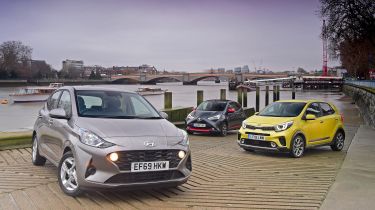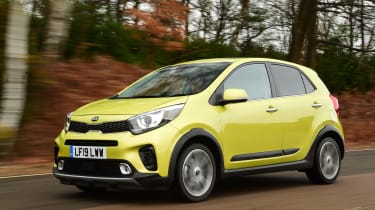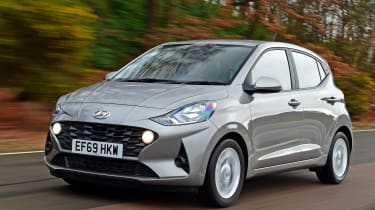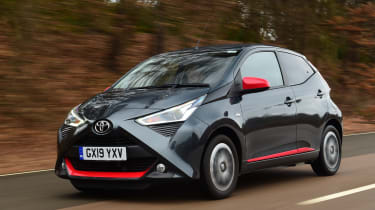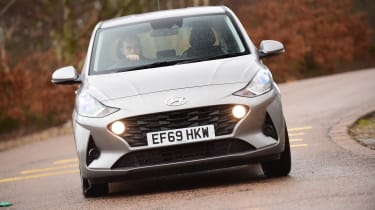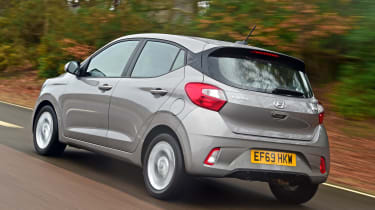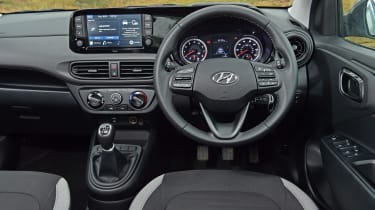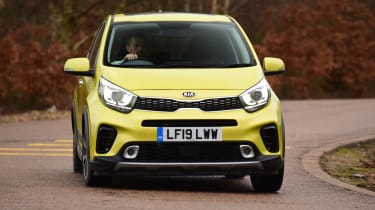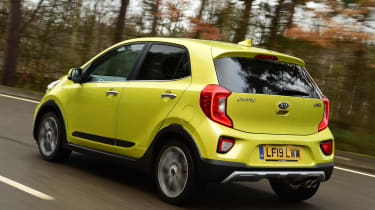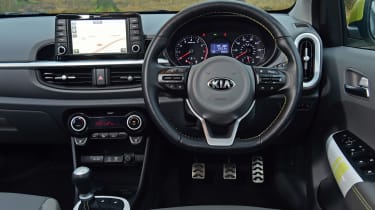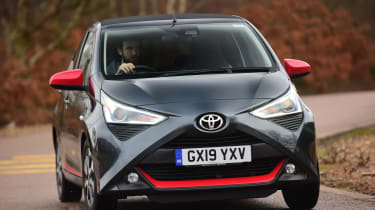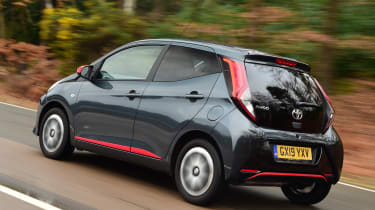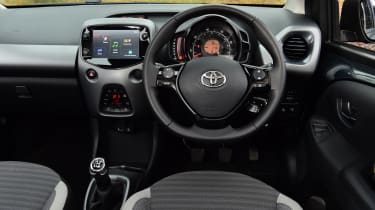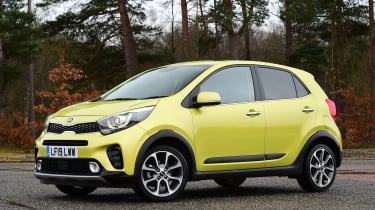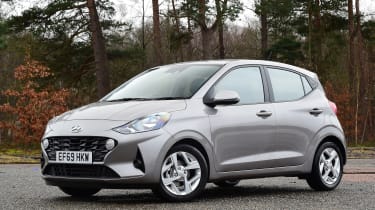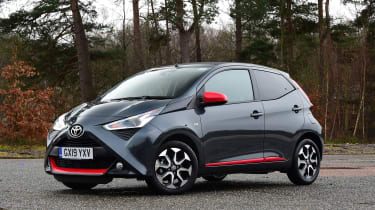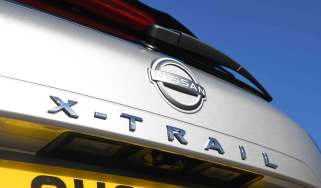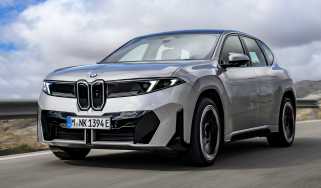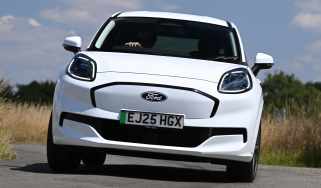Hyundai i10 vs Toyota Aygo vs Kia Picanto: used city cars battle for urban bragging rights
City cars aren’t just urban runarounds; for many drivers they are their main vehicle. We put three to the test
City cars don’t just make sense in urban environments. They have huge appeal for new drivers or those that simply want to save money by buying a car with an affordable price tag and even lower running costs.
But this segment of the new-car market could be going the way of the dodo, as manufacturers struggle to make city cars profitable when faced with the demands of ever-more stringent emissions standards.
The good news is that there’s a great range of excellent city cars available on the second-hand market. We’ve pitched three of the best together to find out which comes out on top.
The Kia Picanto has been around in one form or another since 2004, and the version we’re looking at here launched in 2017. It’s a similar story for the Hyundai i10; a third-generation model arrived in 2019 and was light years ahead of its predecessor.
The Toyota Aygo Mk2 arrived in 2014, but a facelift in 2018 gave it a boost against its highly competent rivals. Which makes the best used buy?
Kia Picanto
| Model: | Kia Picanto 1.25 X-Line |
| Years: | 2017 to date |
| Engine: | 1.2-litre 4cyl petrol, 83bhp |
| Transmission: | 5-speed manual/fwd |
| Kerbweight: | 939kg |
| 0-60mph: | 11.7 seconds |
| Top speed: | 107mph |
| Boot capacity (seats up/down): | 265 litres/1,010 litres |
| Insurance group: | 7 |
| Official economy/CO2: | 56.5mpg/115g/km |
- For: Keen engine, good build quality, smart interior, most practical car on test, cheaper than the i10
- Against: Interior not as ergonomic as the i10’s, nor are ride comfort and refinement as good, not as cheap as Aygo
Used - available now

2021 Lexus
ES
25,404 milesAutomaticPetrol2.5L
Cash £28,200
2021 Lexus
ES
32,339 milesAutomaticPetrol2.5L
Cash £24,876
2025 Toyota
Yaris Hybrid
31,085 milesAutomaticPetrol1.5L
Cash £18,295
2022 Toyota
Yaris Hybrid
13,920 milesAutomaticPetrol1.5L
Cash £20,295The latest iterations of the Kia Picanto and Hyundai i10 share a chassis, so it’s no surprise there are many similarities between the two Korean city cars.
But the Picanto has a key advantage as a used proposition. It’s been around for a couple of years longer, so you can get the 1.25-litre model we tested here for a good deal less than it would cost you to buy a less-potent 1.0-litre Hyundai i10.
Not only did we find the Picanto to be quicker on test, but its engine feels more eager on the road. That said, the i10 is marginally more comfortable and a little more refined at higher speeds.
Turning to the interior, there is no doubt that the Picanto is well made. Although the same goes for the i10, the Kia’s cabin is definitely the nicer place to be, particularly with the little splashes of colour that come with the X-Line model.
None of these cars is hugely practical due to their small size. The Picanto is the most spacious of the three on paper, albeit very close to the i10 in this respect, but its boot is significantly larger than what you’ll find in the Toyota Aygo.
Hyundai i10
| Model: | Hyundai i10 1.0 MPi SE Connect |
| Years: | 2019 to date |
| Engine: | 1.0-litre 3cyl petrol, 66bhp |
| Transmission: | 5-speed manual/fwd |
| Kerbweight: | 921kg |
| 0-60mph: | 14.2 seconds |
| Top speed: | 97mpg |
| Boot capacity (seats up/down): | 252 litres/1,050 litres |
| Insurance group: | 7 |
| Official economy/CO2: | 54.3mpg/104g/km |
- For: Feels mature, with well weighted steering and impressive refinement, good build quality
- Against: Most expensive car here and no better in the real world than Kia, bland interior design and harsh ride around town
The Hyundai i10 is the newest car in this test and it also feels the most mature. It can be a bit unsettled and harsh around town, but get up to speed and it’s impressively smooth – noticeably so in comparison with the Kia Picanto, with which it shares a platform.
The i10’s steering is nicely weighted and its engine is more peppy than that of the Aygo, but the Picanto packs a bit more punch when fitted with the 1.2-litre unit we tested, which is available for less cash than the 1.0-litre motor in the newer and pricier Hyundai.
One area where the i10 has massively improved compared with its predecessor is its interior. It’s just as well made as that of the Picanto, but is actually laid out in a more logical way, we found. The catch, though, is the design, which is rather bland and dull. However, the infotainment system – which features Apple CarPlay and Android Auto connectivity – works brilliantly. The Picanto has a similar set-up, but the i10’s touchscreen is slightly bigger.
Although the i10’s boot isn’t quite as big as the Picanto’s, it’s still spacious enough for this class and is a long way ahead of the Aygo’s load-bay capacity.
Toyota Aygo
| Model: | Toyota Aygo 1.0 VVT-i x-trend |
| Years: | 2014 to 2021 |
| Engine: | 1.0-litre 3cyl petrol, 71bhp |
| Transmission: | 5-speed manual/fwd |
| Kerbweight: | 840kg |
| 0-60mph: | 13.2 seconds |
| Top speed: | 99mph |
| Boot capacity (seats up/down): | 168 litres/812 litres |
| Insurance group: | 9 |
| Official economy/CO2: | 53.3mpg/93g/km |
- For: Cheapest used starting price and even latest model is most affordable, tidy handling and decent kit for age
- Against: Poor ride quality, interior feels cheap compared with rivals’, severe shortage of boot space even for a city car
The Toyota Aygo’s engine feels quite revvy in this company. It doesn’t offer a bad level of performance for the class, but it’s at its best around town in lower gears. Get out on to a national speed limit road or motorway, and you really have to work the engine and gearbox hard to get the Aygo moving. The Toyota’s ride quality isn’t up to scratch in this company, but the Aygo’s steering is good.
The biggest issue it faces is that, despite a facelift in 2018, this generation of the car as a whole has been around since 2014 and is showing its age more than the others. This is most notable in the cabin. Compared with the Picanto and i10, the Aygo’s interior feels rather cheap. That facelift brought some improvements, though: the seven-inch touchscreen is the same size as the Picanto’s and although its basic menus aren’t as sophisticated as its newer rivals’, the addition of Apple CarPlay and Android Auto on facelifted cars make this less of an issue than it might have been.
But the Aygo also has by far and away the smallest boot in this test, with the rear seats in place or when folded, which could be an issue for some buyers.
Use our valuation tool to check the price of a Kia Picanto, Hyundai i10 or Toyota Aygo.
Which one should you choose?
First place: Kia Picanto
The Picanto offers everything the i10 does – and more in some areas – but for less cash due to it having been around slightly longer. It’s the ideal city car in this price range.
Second place: Hyundai i10
There’s not a lot separating the i10 and Picanto as new cars, but the second-hand price difference makes it hard to justify going for the Hyundai, sadly.
Third place: Toyota Aygo
Despite a facelift in 2018, the Aygo’s older bones are noticeable in the company of the latest city cars. Its one big advantage is its very low used starting price.
Did you know you can sell your car with Auto Express? Get the highest bid from our network of over 5,500 dealers and we'll do the rest. Click here to try Auto Express Sell My Car now...
Hyundai i10 vs Toyota Aygo vs Kia Picanto new car test: February 2020
Below is our original group test of the Hyundai i10, Toyota Aygo and Kia Picanto as published in 2020. All information correct at time of publication...
Car makers have struggled to square the city car circle, working out how to glean meaningful profits from a small, affordable model. The class has stagnated as a result, but there’s been a round of updates and the one leading the charge is the Hyundai i10.
This new third-generation car picks up where its predecessor left off. We heaped praise on the Mk2 when it launched thanks to its practicality and affordability. Hyundai has improved the former, adding more tech into the mix, too, and while it still offers lots of the latter, there’s no denying city cars have got pricier. That’ll be those margins, then.
The same is true of the new i10’s rivals, though; just £280 separates the cheapest and the most expensive models in our group test here. Those competitors come in the form of the Kia Picanto – a Korean hatchback that we’ve praised before for its all-round blend of ability – and the funky-looking Toyota Aygo. But which of these city cars will take its seat on the throne to be crowned king of the urban jungle?
Hyundai i10
| Model: | Hyundai i10 1.0 MPi SE Connect |
| Price: | £13,495 |
| Engine: | 1.0-litre 3cyl, 66bhp |
| 0-60mph: | 14.2 seconds |
| Test economy: | 40.0mpg/8.8mpl |
| CO2: | 104g/km |
| Annual road tax: | £135 |
With more technology and safety equipment, plus extra practicality, the Hyundai i10 arrives as a strong package in city car sector. We’re testing what is likely to be the most popular model, the mid-spec 1.0-litre SE Connect, at £13,495.
Design & engineering
The original i10 was a scrappage scheme winner, with the government trade-in deal helping popularise this compact hatch alongside its sub-£10,000 lead-in price. Times have changed, though, and the city car market is tougher.
The starting price has risen to £12,495 for this third-generation model, while the SE Connect version we’re testing is another £1,000 on top of that. But Hyundai is not alone with its pricing and you do get a good level of kit for your money.
Manual air-conditioning, a reversing camera, more safety tech than before, cruise control, DAB and decent phone connectivity are all standard, but the real upgrade is the eight-inch screen this car gets.
While sat-nav isn’t standard, the advent of Apple CarPlay and Android Auto has meant that it doesn’t need to be; the Hyundai gets both these features included, so the set-up works slickly.
It’s a good job there’s some more advanced tech inside, too, because otherwise the i10’s cabin is drab compared with the Picanto’s in particular. The grey plastics are solid (no surprise there – they all are in this class), but it feels well built and is spacious.
Underneath the fresher-looking body, whose style has been tweaked compared with its predecessor’s to look a little sharper, the i10 sits on an all-new platform for the model, which is 20mm wider and has a 40mm longer wheelbase. It’s also 20mm lower, so the Korean hatchback looks sportier.
The new platform uses a common suspension layout for this class – struts at the front and a torsion beam at the rear – to help keep costs down, while our test car was powered by a 1.0-litre three-cylinder naturally aspirated petrol engine that serves up 66bhp and 96Nm of torque. Conservative figures, then, but because the i10 only weighs 921kg (all three of our contenders here tip the scales at less than a tonne) they should be adequate.
Driving
While the i10 has grown in size, it feels more mature on the move, too. The ride is mostly good. Around town only the worst an urban road has to throw at the suspension really upsets it, although it is just a little fidgety and feels firm. It’s smoother at speed.
On the motorway it’s more settled – although expansion joints do really pummel the suspension, at the rear in particular – and the tauter body and wheel control make it feel more safe and secure here.
On country roads the same is true. The steering is a good weight – not too heavy for around town, but not too light on the motorway – but it lacks basically any feedback. That’s not really an issue, though.
The engine is acceptable. It’s not very keen to rev, which means the i10 doesn’t have the zing some of the more dynamic-feeling city cars, but its torque means it still offers enough flexibility. At our test track the 0-60mph sprint took 14.2 seconds, making it the slowest car here. But that torque compared with the Aygo – delivered slightly lower down – meant it was a more flexible machine, even if theKia had the measure of both of its competitors.
One area where the i10 did come out on top was going from 30 to 70mph through the gears, again where torque helps. This, allied to the five-speed manual’s positive shift, meant it took 10 seconds – a good time that was much faster than its rivals’.
The i10’s performance meets the minimum standard for a city car, and although it’s not as flexible as the Kia, it rides and handles wellenough and much better than the Aygo.
Practicality
Hyundai's newcomer is also much more practical than the Toyota, with an extra 84 litres of boot capacity with the seats up, at 252 litres in total. It’s a good amount of space that’s almost as much as in some superminis.
The rear of the cabin is roomy, too, offering a similar level of space to the Picanto, while both feel a lot less cramped than in the rear of the Aygo, which isn’t packaged as well. Otherwise, despite the i10’s slight growth in size it’s as easy to manoeuvre and park as ever. The standard-fit reversing camera is a nice feature that helps here, even if it’s not strictly necessary because rear visibility is good.
Ownership
A five-year unlimited-mileage warranty and one year’s roadside assistance are included with the Hyundai, which is a strong package. Although the i10 is yet to be rated by crash-test expert Euro NCAP, it has with autonomous braking and lane-keep assist as standard, so we’d expect a strong score.
With Premium trim you can also add the £1,000 Tech Pack, which features an intelligent speed limit warning system, but it’s not available on SE Connect versions. It’s not necessary, either.
Running costs
Here’s where a city car needs to excel, especially now these models aren’t quite as cheap as they once were. On economy the i10 did well, returning 40mpg exactly, which means an annual fuel bill of £1,747.
The Picanto recorded 41.2mpg, so it will be £51 cheaper a year in petrol. The Aygo was the most frugal of this trio, though, at 42.9mpg, which means an annual spend of £1,629 at the pumps. It’s a good result for the Toyota, which struggles in other areas.
Testers’ notes: “The i10’s styling is definitely more sporty and fashionable than its predecessor’s, but we’d pick one of the brighter colours, becauseotherwise the Hyundai looks a little dull.”
Kia Picanto
| Model: | Kia Picanto 1.25 X-Line |
| Price: | £13,345 |
| Engine: | 1.2-litre 4cyl, 83bhp |
| 0-60mph: | 11.7 seconds |
| Test economy: | 41.2mpg/9.1mpl |
| CO2: | 115g/km |
| Annual road tax: | £135 |
At £13,345 in X-Line trim (our pictures show an X-Line S model) in conjunction with the 1.25-litre engine, the Picanto is just £150 cheaper than the i10. These two cars share much of the same make-up and tech, but which will come out on top?
Design & engineering
This third-generation Picanto was launched in 2017 on a new chassis that the i10 now shares. As a result, and given that Kia and Hyundai are part of the same company, it’s no surprise that the two cars share many tech features.
Take the i10’s 1.0-litre engine; it’s also available in the Kia, but for basically the same price as the i10 1.0 SE Connect you can get the more powerful Picanto 1.25 in X-Line trim, which matches SE Connect.
The 1.25-litre engine has four-cylinders rather than three, but is still without a turbocharger. It produces more power and torque than the i10 as a result, at 83bhp and 122Nm, but it’s still connected to a five-speed gearbox that drives the front wheels.
Given the two models are based on the same Hyundai-Kia platform, it’s no surprise they share similar dimensions and technology. X-Line features a slightly smaller seven-inch touchscreen, but a reversing camera, Apple CarPlay and Android Auto, Bluetooth, DAB radio, air-conditioning and some good safety equipment are all included.
X-Line also gets parking sensors, unlike the i10, but it doesn’t come with cruise control, which is fitted to the Hyundai as standard. These small differences in kit aren’t the biggest issue, though, because the Kia is well equipped and gets the core of what you want.
Quality inside is on par with the Hyundai’s, but the interior feels fresher and is more interesting to look at, despite it being the older model. There are more touches of colour compared with the i10’s drab, grey cabin. The build feels solid and the same as the Hyundai’s, even if the ergonomics could be better in places; for example, the i10 has a raised gearlever and tray to store your mobile phone when it’s hooked up. This is located much lower down in the Kia and there’s not as much obvious storage for your device.
Driving
The Kia drives nicely, though. With its larger, more powerful engine, it’s no surprise that the Picanto was quicker, taking 11.7 seconds to sprint from 0-60mph. That was 2.5 seconds quicker than the Hyundai’s time and 1.5 seconds faster than the Aygo managed.
With more torque, it was much more flexible over our in-gear performance tests, too. The highlight was the 17.1-second time from 50 to 70mph in fifth, which doesn’t look too impressive, until you compare it with the i10’s 20.7-second time. This translates to on-road driving, where the Picanto’s engine feels keener to rev and the car more easily picks up speed.
However, no matter whether you’re around town or on the motorway, the Kia’s ride feels a little more loosely controlled than the Hyundai’s, because the Picanto bounces around more. It’s a little less stable at high speed as a result, and not so comfortable, but the difference isn’t huge. More noticeable is how the shift action differs between the two transmissions in the Hyundai and Kia. We know the i10’s is a nice weight and precise; the Picanto’s is light, rubbery and a little notchy all at the same time, and this detracts from an otherwise-decent powertrain.
All three cars’ engines are noisy at higher revs on the motorway, but it’s the lower, more muted roar of the i10’s three-cylinder that’s most refined, though.
Practicality
With its 255-litre boot the Picanto is the most practical car on test. That means there are three litres more than in the i10’s load bay (although in real terms that’s basically nothing) and 87 litres more than the Aygo. This, however, is a much more useful gain.
There’s an equal level of space in the rear when compared with the i10, although the higher roof in the Kia means there’s a bit more headroom. With the i10 already much more practical than the Aygo, it’s no surprise that the Kia beats the Toyota, too.
Just as with the i10, the Kia’s reversing camera helps manoeuvrability, and it’s joined by parking sensors. They’re not really necessary, but older drivers who may have more limited mobility will find these aids do come in handy.
Ownership
X-Line Picantos feature autonomous emergency braking with collision warning, which helped the Kia earn a four-star Euro NCAP safety rating in 2017. Unlike the i10, though, there’s no lane-keep assist fitted.
Compared with Hyundai’s warranty, Kia’s package is just as strong, offering seven years/100,000 miles coverage. Kia also throws in a one-year roadside assistance package. The Kia brand was the most convincing of these three with owners, because it finished third out of 30 in our Driver Power 2019 satisfaction survey, ahead of Hyundai in 22nd (a relatively poor result for the company) and Toyota a respectable mid-table 10th.
Running costs
If you’re a cash buyer, the Kia is expected to have the best residual values of this trio. Our experts predict it will hold onto 41.1 per cent of its original price, so will be worth £5,482 after three years or 36,000 miles. This works out at £7,863 in depreciation.
The i10 is rated at 39.6 per cent, with a residual value of £5,439 (£8,146 in depreciation), while the Aygo’s 37.3 per cent predicted residual value isn’t far behind its rivals’. But they are so close on list price it means it’ll be worth less after this ownership period, at £4,925. This equates to depreciation of £8,290.
Testers’ notes: “There’s also a 1.0-litre turbocharged engine available in the Picanto. It’s pricier, but if you’re after more grunt in a compact package then this could be the solution to your problem.”
Toyota Aygo
| Model: | Toyota Aygo 1.0 VVT-i x-trend (Safety Sense) |
| Price: | £13,215 |
| Engine: | 1.0-litre 3cyl, 71bhp |
| 0-60mph: | 13.2 seconds |
| Test economy: | 42.9mpg/9.4mpl |
| CO2: | 93g/km |
| Annual road tax: | £135 |
The Aygo was refreshed back in 2018 with a revised look and improved tech, but two years on, can it keep pace with the latest car to join the class? We’re testing the Aygo 1.0 in x-trend trim with Toyota’s Safety Sense pack, which costs £13,215, making it the cheapest car here, but not by much.
Design & engineering
Since the city car trio of the Skoda Citigo, SEAT Mii and Volkswagen up! went off sale (they’ll all be back soon in Auto Express as fully electric variants or with revised ranges) it’s given models like the i10, Picanto and, in particular, the Aygo a stronger look in.
The Aygo was designed as part of a city car trio, too, with Peugeot, Citroen and Toyota all pooling their cash to develop their subtly different takes on urban mobility at the time, albeit with the 108, C1 and Aygo all sharing the same underpinnings.
As a result, the Aygo’s suspension set-up is similar to its test rivals’, while it also uses a non-turbo 1.0-litre three-cylinder petrol engine. This makes 71bhp and splits the other two for power, but offers the least torque. There’s a five-speed manual transmission with front-wheel drive. It’s a fairly conventional recipe for this class, but times are changing and more fully electric city cars are on the way.
This second-generation Aygo was originally launched in 2014, which means when you step inside you can tell the design is six years old and it’s showing its age. The seven-inch touchscreen is mounted in the centre console, which is a solid piece of cheap-looking silver plastic that also houses the heating and ventilation controls.
While the design is more interesting than the i10’s interior, the rest of the cabin materials look cheap and older. But that’s almost to be expected given the Aygo is nearing the end of its lifecycle, and the i10 is just starting its latest one. The Kia is caught in the middle.
At least there’s a good level of equipment that pretty much matches the i10 and Picanto. The Aygo’s touchscreen features CarPlay and Android Auto – it was one of the first Toyotas to get this technology – plus climate control, DAB radio and a reversing camera. Our car also featured Toyota’s Safety Sense pack for extra safety tech, which brings the price almost to parity with its rivals – or so close that it’s not really an issue between any of them.
Driving
The Aygo handles sweetly. It’s light, so it feels nimble in the tight confines of town centres, like a city car should. However, the trade-off for this agility is that the ride feels loosely controlled, a little too bouncy and not as refined as either the i10’s or the Picanto’s.
The gearbox is okay, while the engine is fairly revvy. Given it split its two rivals for performance, it’s no surprise that the Aygo divided them when it came to the 0-60mph sprint, taking 13.2 seconds.
However, its in-gear performance was much less impressive. The five-speed unit’s ratios are long, so you often have to drop down one or even two gears to extract the Aygo’s performance. It has the least torque and this showed particularly in our 50-70mph acceleration test in fifth, where the Toyota took a yawning 30.3 seconds, which was so far off its rivals’ times. The Kia took 17.1 seconds and the i10 needed 20.7 seconds to complete the task.
As we’ve said, as long as a city car meets a minimum threshold of performance it’s okay; the Aygo just about does this, because in town in the lower gears it feels peppier than on the motorway, where it struggles. That’s also true of its ride, where it feels less controlled, which impacts higher-speed cruising refinement. Given that the other two cars are refined and practical enough to occasionally take on the role of a supermini, this is quite important.
Practicality
Not only does the Aygo lose out on ride quality, but with its 168-litre boot and smaller rear doors making access to the rear of the more-cramped interior harder, it’s not the most versatile machine here, or in the class.
Rear space is fine for short trips, but longer journeys will test passengers’ resolve more than in either the i10 or Picanto.
The rear window line is also a slight issue because although it looks great, it means over-the-shoulder visibility isn’t as good as in its rivals.
Ownership
We’d order the Aygo with Toyota’s Safety Sense pack, because it adds autonomous braking as well as lane- departure warning to earn the car a four-star Euro NCAP safety rating, matching the Kia’s result.
Its warranty also basically matches its rivals’, with Toyota offering five-year/100,000-mile coverage. However, roadside assistance costs £7 per month; both rivals come with a year’s cover.
Running costs
Servicing over three years will cost £550 on the Aygo, compared with £505 on the i10 and £389 for Kia’s three-year maintenance pack.
Other costs to factor in are insurance – £340 for the Picanto, £345 for the Aygo and £353 for the i10 – and company car tax, although many people probably won’t run these as business vehicles.
But if you will, then the Aygo will be the cheapest to run thanks to its 93g/km CO2 emissions that put it in the 22 per cent Benefit-in-Kind bracket. The Toyota will cost lower-rate taxpayers £573 a year in contributions, compared with £638 for the 104g/km i10, which sits in the 24 per cent BiK category, and £708 for the 115g/km Picanto, which is rated in the 27 per cent class for company car users.
Testers’ notes: “The Aygo feels like it was conceived in a market that’s different to it is now. The lack of space does feel like a drawback, but the Toyota is still respectable to drive and handles well.”
Verdict
First place: Kia Picanto
For a similar amount of cash to the i10, you get a more potent engine in the Picanto and a similar level of equipment. The Kia offers everything you’d want in this class, with solid infotainment, as much versatility as the Hyundai and a good level of flexibility, even if the gearshift and ride aren’t quite as nice as the i10’s. It was more efficient to top it off, while the Picanto looks funkier, too, which is important in this class.
Second place: Hyundai i10
The i10 is a great little car; its ride is the best of this group, its gearshift is the nicest, and the infotainment system is better than its rivals’. But it loses out to the Picanto when it comes to performance and running costs (which is a massive factor for budget models like these), while there’s basically nothing in it on price. It matches its Korean sibling for practicality, because boot and cabin space are basically equal.
Third place: Toyota Aygo
Both its rivals easily outclass the Aygo, highlighting the Toyota’s age compared with its newer competitors. It’s a step in the right direction that Toyota has added extra smartphone connectivity, but there are more fundamental flaws with the Aygo, such as its poor packaging, lack of in-gear grunt and the quality inside. At least the Toyota is affordable and is relatively well equipped for the cash.
Figures
| Kia Picanto 1.25 X-Line | Hyundai i10 1.0 MPi SE Connect | Toyota Aygo 1.0 VVT-i x-trend (Safety Sense) | |
| On the road price/total as tested | £13,345/£13,345 | £13,495/£14,045 | £13,215/£13,730 |
| Residual value (after 3yrs/36,000) | £5,482/41.1% | £5,439/39.6% | £4,925/37.3% |
| Depreciation | £7,863 | £8,146 | £8,290 |
| Annual tax liability std/higher rate | £708/£1,417 | £638/£1,276 | £573/£1,147 |
| Annual fuel cost (12k/20k miles) | £1,696/£2,827 | £1,747/£2,912 | £1,629/£2,715 |
| Insurance group/quote/VED | 7/£340/£135 | 7/£353/£135 | 9/£345/£135 |
| Cost of 1st/2nd/3rd service | £389 (3 years) | £134/£230/£141 | £145/£260/£145 |
| Length/wheelbase | 3,670/2,400mm | 3,670/2,425mm | 3,465/2,340mm |
| Height/width | 1,500/1,625mm | 1,480/1,680mm | 1,460/1,615mm |
| Engine | 4cyl in-line/1,248cc | 3cyl in-line/998cc | 3cyl in-line/998cc |
| Peak power/revs | 83/6,000 bhp/rpm | 66/5,500 bhp/rpm | 71/6,000 bhp/rpm |
| Peak torque/revs | 122/4,000 Nm/rpm | 96/3,750 Nm/rpm | 93/4,400 Nm/rpm |
| Transmission | 5-speed man/fwd | 5-speed man/fwd | 5-speed man/fwd |
| Fuel tank capacity/spare wheel | 35 litres/repair kit | 36 litres/repair kit | 35 litres/spare |
| Boot capacity (seats up/down) | 255/1,010 litres | 252/1,050 litres | 168 litres/N/A |
| Kerbweight/payload/towing weight | 939/461kg/N/A | 921/360kg/N/A | 840/400kg/N/A |
| Turning circle | 9.4 metres | 9.6 metres | 10.8 metres |
| Basic warranty (miles)/recovery | 7yrs (100,0000)/1yr | 5yrs (unlimited)/1yr | 5yrs (100,000)/N/A |
| Driver Power manufacturer/dealer pos. | 3rd/5th | 22nd/11th | 10th/2nd |
| NCAP: Adult/child/ped./assist/stars | 87/64/54/47/4 (2017) | TBC | 82/63/64/57/4 (2017) |
| 0-60/30-70mph | 11.7/12.0 secs | 14.2/10.0 secs | 13.2/15.4 secs |
| 30-50mph in 3rd/4th | 6.0/9.2 secs | 7.1/11.1 secs | 10.2/14.1 secs |
| 50-70mph in 5th | 17.1secs | 20.7 secs | 30.3 secs |
| Top speed/rpm at 70mph | 107mph/3,100rpm | 97mph/3,400rpm | 99mph/3,100rpm |
| Braking 70-0/60-0/30-0mph | 60.7/38.6/9.7m | 50.2/37.6/9.4m | 52.5/38.5/9.7m |
| Auto Express econ. (mpg/mpl)/range | 41.2/9.1/317 miles | 40.0/8.8/317 miles | 42.9/9.4/330 miles |
| WLTP combined | 56.5mpg | 54.3mpg | 47.1-53.3mpg |
| WLTP combined | 12.4mpl | 11.9mpl | 10.4-11.7mpl |
| Actual/claimed CO2/tax bracket | 158/115g/km/27% | 163/104g/km/24% | 152/93g/km/22% |
| Airbags/Isofix/parking sensors/cam | Six/yes/yes/yes | Six/yes/no/yes | Six/yes/£199/yes |
| Auto box/lane-keep/blind spot/AEB | £675/no/no/yes | £500/yes/no/yes | £700/no/no/yes |
| Clim./cruise ctrl/leather/heated seats | Air-con/no/no/no | Air-con/yes/no/no | Yes/no/no/no |
| Met paint/LEDs/keyless/pwr tailgate | £515/no/no/no | £550/no/no/no | £515/no/no/no |
| Sat-nav/digital dash/DAB radio | No/no/yes | No/no/yes | No/no/yes |
| Wireless charge/CarPlay/Android Auto | No/yes/yes | No/yes/yes | No/yes/yes |

